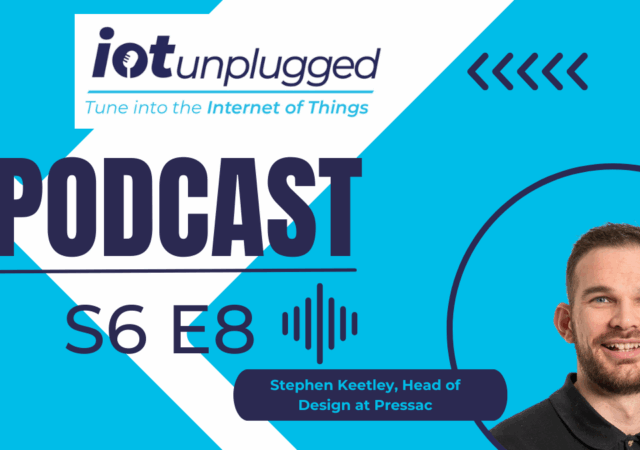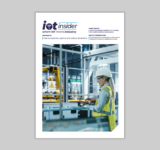akenza and Bunch Tech are shining examples of companies who were established with the mission of simplifying IoT applications, in recognition of the existing hurdles that sometimes face businesses when they start out with IoT projects.
akenza was founded approximately eight years ago and provides a self-serve, low code platform while integrating hardware from different providers. Bunch Tech is about two and a half years old and provides its customers with plug and play access to over 300 devices.
Recently, akenza and Bunch Tech announced their partnership, which will oversee Bunch Tech deploy smart building applications on akenza’s low-code IoT platform.
IoT Insider caught up with Jonas Schmid, Co-Ceo and VP Sales of akenza and Fred Moore, CEO and Founder of Bunch Tech to talk more about the synergies between both companies and the smart building market.

Challenges facing IoT projects
Moore said when it came to businesses carrying out IoT projects, there were two camps of people: heavily informed buyers who inherently understand IoT, and then people who have a problem to solve and hope to use IoT to resolve it.
“It could be energy monitoring across multiple sites, and they don’t have hourly meters. It could be ensuring that cleaners are doing what they need to do across multiple sites. It could be occupancy monitoring of a building,” explained Moore. “They know there’s data that they want to uncover and they know there’s a problem or value that they want to either solve or derive from the project, but they don’t necessarily understand the steps you have to go through.”
Sometimes, as a result of this, those in the second camp can see their projects fail, and create a misconception that IoT projects are difficult to derive value from.
“It’s about the setup and the structure of the projects to ensure that you’re getting what you want out of it,” added Moore. “Even things like hardware selection … and components like that, they can have a massive impact on the success or failure of a project.”

Schmid agreed: “The [our] experience is probably the same. You have a lot of people who are [at a] very early stage in these kinds of processes, and so they need quick access to something or [to a] solution. They can’t … build something for the next two years. They want to do their air quality measurement or occupancy management, and it should be running tomorrow.”
While akenza provides data and tools to these people, Schmid noted that there are also bigger enterprises who are further down the line and have a good understanding of IoT.
“Both of them need to be covered … on all different topics,” he added.
The smart building space
Both companies operate in the smart building space, an area where wireless sensors are deployed to capture data to inform decision-making on how to best use or improve an environment. Parameters that are commonly monitored include occupancy data, air quality, and light and noise levels.
Although smart buildings are not a new concept, the advent of technologies like AI and IoT have fuelled its growth, and the market is changing.
“There’s still a massive opportunity within it [the smart building market],” said Moore. “It’s still a very early stage market [but] it’s changed a lot in the last five years.” One of these changes that has been observed is how companies have moved from one-size-fits-all solutions to tailored, agnostic offerings.
“In the past, you’ve seen lots of … vertical solutions that effectively served one use case,” he said, noting that this growing demand for tailored solutions doesn’t necessarily always encapsulate dashboards and visualisation, but can simply be a desire to have data pulled together from multiple different sources that is easy to manage and view.
“One thing I’ve noticed, at least [on] clients’ sides, [is] that those projects are moving out of the innovation team, and much more into [the] highly strategic levels of company decisions,” said Schmid. “Before it was the innovation team that was running 15 sensors somewhere in the basement. Today, the question is, how can I get data on my clinical portfolio?”
Thinking strategically, the questions for these companies aren’t about what kind of technology to use, but determining whether sensors are adequate for getting occupancy data, or whether a building management system (BMS) would be necessary, for example.
“It goes away from what kind of hardware you choose for a project, what kind of connectivity you choose, and away from those kinds of technological decisions,” added Schmid.
The partnership
The partnership came about after Bunch Tech assessed different options on the market and came to the conclusion that akenza’s platform would meet their needs best. One draw of the platform for Bunch Tech was the extent of the device type library, particularly due to the speed at which its customers were adding devices: Moore noted around 320 were added in January, and now there are 347.
Another was the flexibility of the platform, “to deliver a solution with dashboards or without dashboards,” said Moore. “The flexibility to meet customer requirements was really important from my perspective, and the ease of using it.”
The platform also offers 3D floor models, which provides more interactivity and greater visualisation of the data.
From akenza’s side, the partnership with Bunch Tech provides them with the opportunity to branch out into the UK, which has a dual opportunity in the form of a strong real estate and property market, and the government pushing a sustainability strategy that requires buildings to reduce their environmental impact.
“Look at the flywheel of regulation, investor pressure, because of regulation, and changing customer desires … that flywheel creates a requirement for landlords to show they’re taking sustainability steps and to make their spaces more attractive and to meet the different requirements of investors and regulators,” explained Moore.
Attuned well to the needs of their customers and the evolution of the smart building market which presents prime opportunities, the partnership between akenza and Bunch Tech is set to be advantageous.
“I’m excited to make some noise in the market together with Bunch Tech,” concluded Schmid.
There’s plenty of other editorial on our sister site, Electronic Specifier! Or you can always join in the conversation by visiting our LinkedIn page.










